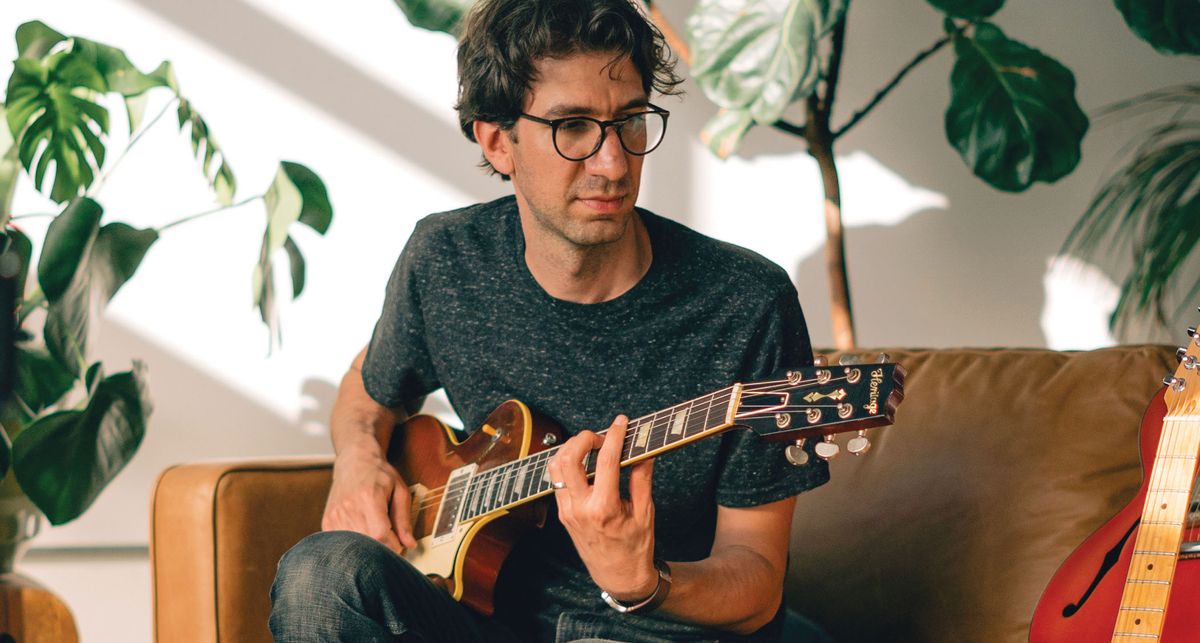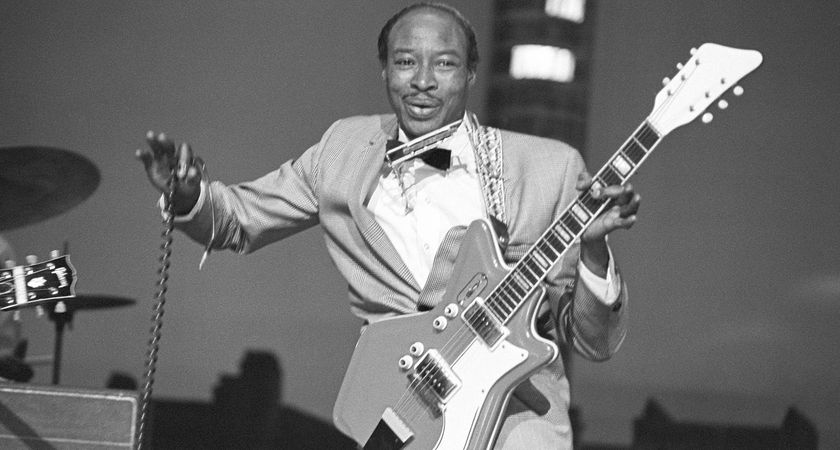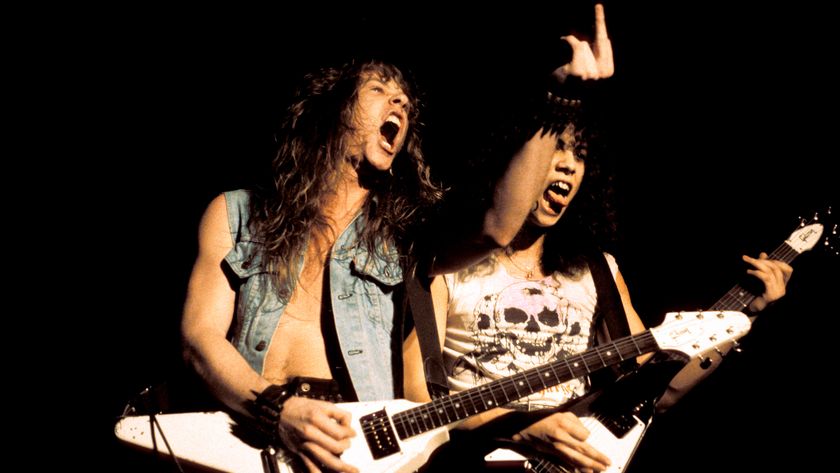“If you’re new to funk guitar playing, these ideas will help you get you into the groove”: Learn 10 funk guitar riffs inspired by James Brown, Prince and Vulfpeck
Pickup Music’s LA-based session ace Jamey Arent is your host for a lesson that’s not only a great introduction to the fundamentals of funk guitar, but could be the inspiration you need to take your funk chops to the next level

Things are about to get funky! We’ve got a brand new bag of riffs for you to learn, courtesy of Pickup Music. These 10 rhythm riffs showcase funk guitar styles from across the ages. Whether you’re into the classics like James Brown and Michael Jackson or the more contemporary funksters like Vulfpeck, you’ll find plenty of inspiration here.
If you’re new to funk guitar playing, here’s a handful of helpful ideas to get you into the groove. First up, aim to stay in the pocket – nothing is more important than keeping your timing tight. Second, serve the music – funk isn’t about showcasing your shred skills. Next, find your space in the groove – try to find what’s missing and fill that gap. Finally, you want solid staccato – get good muting with both hands for complete string control.
If you really want to be a great funk guitarist, practice 16th notes to a metronome… practice them a lot!
Chords
These are the most important shapes we’ll be looking at, but with one key difference. These are the full shapes.
It’s rare in funk to play all the strings, but it is still helpful to know which shape the ‘partial chords’ are taken from. Play these shapes first, then see if you can spot them in the tab examples that follow.



Example 1. Inspired by James Brown

This riff is the first of a few in the key of E. Play the top four strings of the E9 voicing. For added funk, slide up from a semitone below. Then, take your pinky and hit the 9th fret – this briefly turns it into an E13 chord. Keep the strings muted where you see X’s in the tab, then press the chord down when you want to activate it.
Example 2. Inspired by Prince

This is a great funk loop. Feel free to experiment with different rhythm patterns to make it your own. Start with an Am7 chord shape at the 12th fret. Use your fourth finger to hit the b7 G note on the 15th fret.
Play that shape twice, followed by two muted chops. Next, play an Am6 by simply moving the fourth finger down one fret, then repeat the same strumming pattern. Lift your fourth finger again for the very last strum to finish on the Am7.
Example 3. Funky single-notes

Time to go low! Start with your first finger on the 3rd fret of the A string. Pick those 16th notes really close to the bridge to get a spanky sound.
The lick is based around the D minor pentatonic scale with that funky trill moving between the major and minor 3rd. The only time you stop the stream of tight 16th notes is during those hammer-ons and pull-offs.
Example 4. “Bubble” line

This is a common sound in many Michael Jackson songs. The guitarist’s job here is to add another percussive layer while creating a short, hooky melody. The ‘bubble’ term comes from that bright popping sound. You can generate this by switching to a middle-position pickup, using the edge of your pick, and plucking sharp staccato notes.
Example 5. Inspired by Earth, Wind and Fire

Grab that E7#9 chord – for the non-jazz players, it’s better known as the “Hendrix chord”. Similar to the first riff, we’ll slide up from a half-step below to give that laid-back feel. It’s very rare to strum all six strings in funk guitar – and this riff is no different.
Use some overhang from your second finger to mute the low E and the same with your fourth to mute the high string.
Example 6. Dominant 7th riff

This riff is based around a D7 chord up at the 12th fret. Again, start with the half-step slide into the D7. For the next chord shape, barre your third finger along the D, G, and B strings on the 12th fret – this is like a mini G chord.
Now move that shape down two frets and play it with your first finger. The final flourish is almost like a little blues run.
Example 7. Unison bend

We’re starting on on an Em11 chord on the 14th fret here. Can you guess what your strumming hand has to do? That’s right! 16th notes – just like most of these riffs. The pattern is four strums of the chord, then two muted.
Play that two times round, but on the second time, follow the two muted strums with a unison bend. For the unison bend, put your first finger on the 12th fret of the E string, then bend the 15th fret of the B string up until the two pitches match.
Example 8. Combining single-notes and chords

Time to mix things up. Quite often, funk players move between chords and single-note lines in the same riff. This riff is based around an E7 shape and the pentatonic box that surrounds it.
After the initial lick, you land on the 5th fret of the A string and hit a few muted strums. The final finesse is that big E9 chord chank at the end. It’s a great way to lead back to beat 1.
Example 9. Doublestop Riff

Don’t have another guitarist to harmonise with? No worries! This riff incorporates doublestops to double the fun. You can think of these like chord fragments. For example, play the G and B strings on the 5th fret, and it’s almost like a tiny C chord.
Move down to the 4th fret on the G string and the 3rd fret on the B string for a ‘rootless’ G chord. Often the bass player will cover the root note, so you don’t always need it in your chords.
Example 10. Moving shapes

Speaking of mini chords, you can play an Em7 using the open D chord shape – just move it to the 7th fret and play the top three strings. The next part of the riff is just moving the shape up two frets, but… there’s a funky bit in between – the “CHIKAPITA!” triplet.
Loosen up your wrist and try to emulate the sound of that word with your picking hand. The “CHI-KA-PI” is played on the first shape and the “TA!” lands on the chord two frets up.
Get The Pick Newsletter
All the latest guitar news, interviews, lessons, reviews, deals and more, direct to your inbox!

Want to play Master of Puppets the right way? Here's how to get faster at downpicking so you can chug like James Hetfield

“A few poorly intonated sustained bends in a solo can make the guitar's most emotive technique sound bad”: Learning how to bend strings correctly is one of the quickest ways to make your playing sound better


![Joe Bonamassa [left] wears a deep blue suit and polka-dotted shirt and plays his green refin Strat; the late Irish blues legend Rory Gallagher [right] screams and inflicts some punishment on his heavily worn number one Stratocaster.](https://cdn.mos.cms.futurecdn.net/cw28h7UBcTVfTLs7p7eiLe-840-80.jpg)






